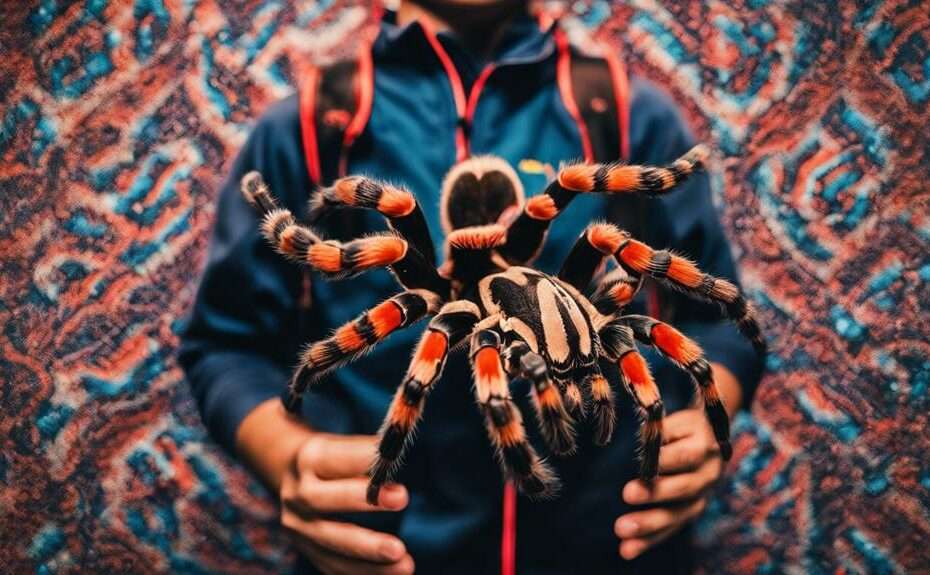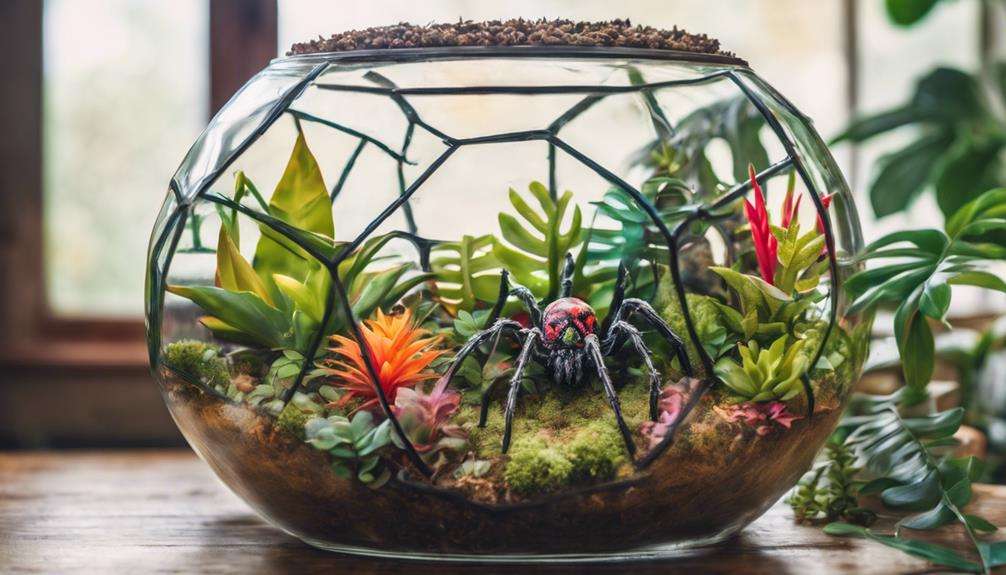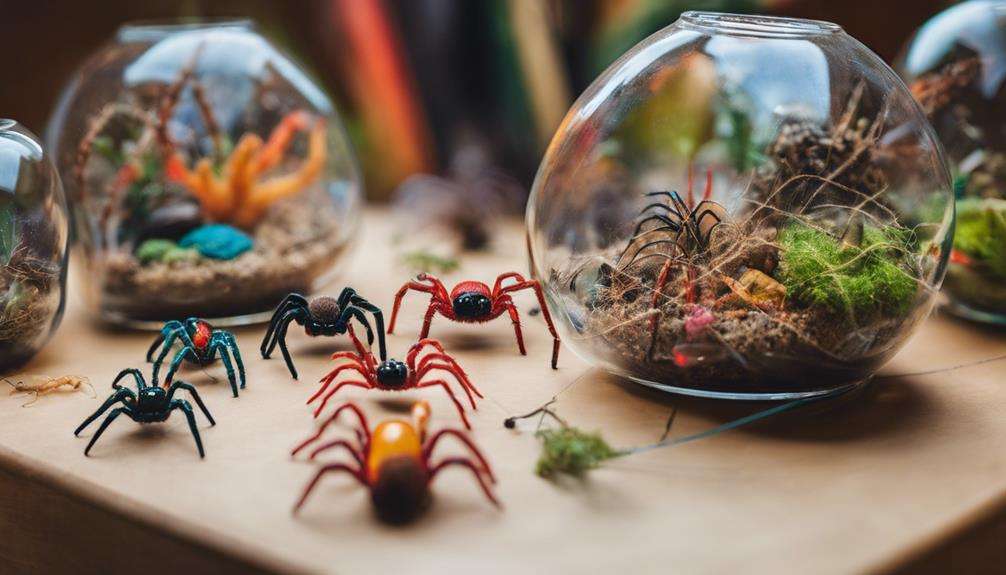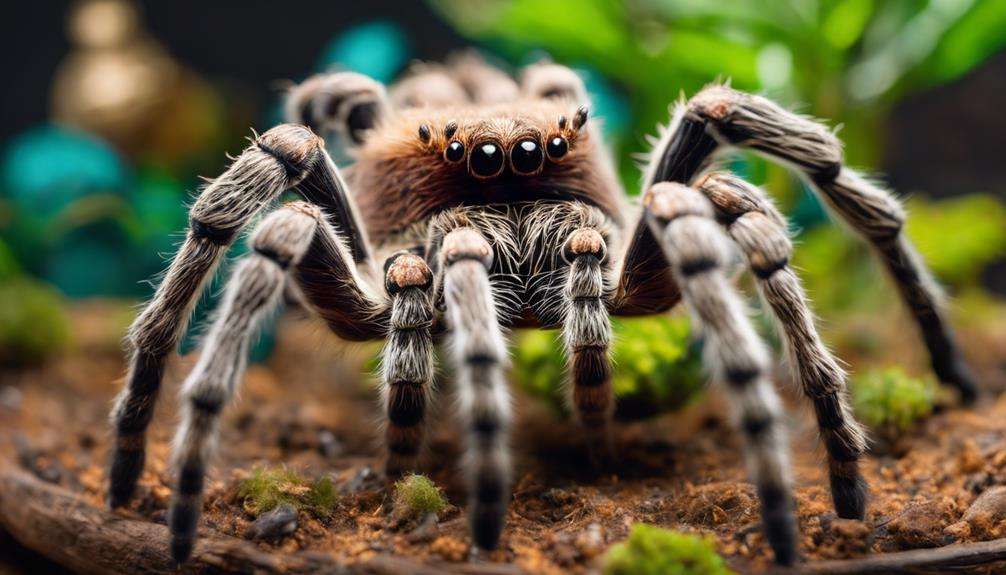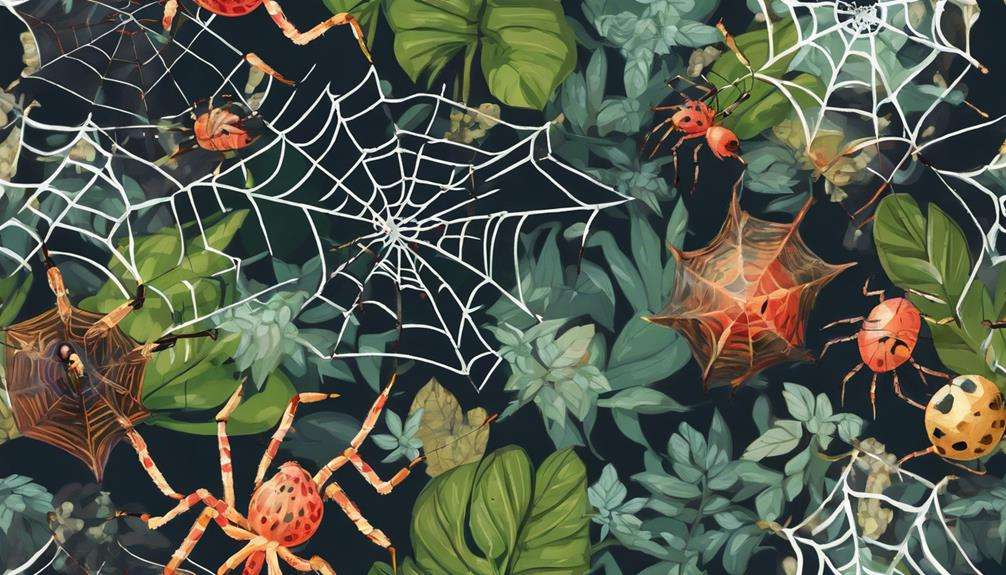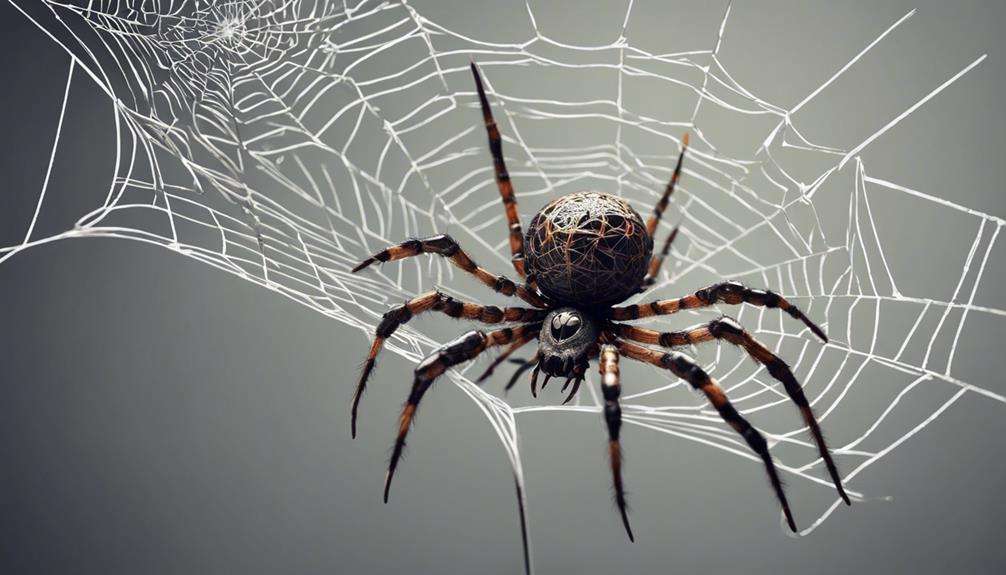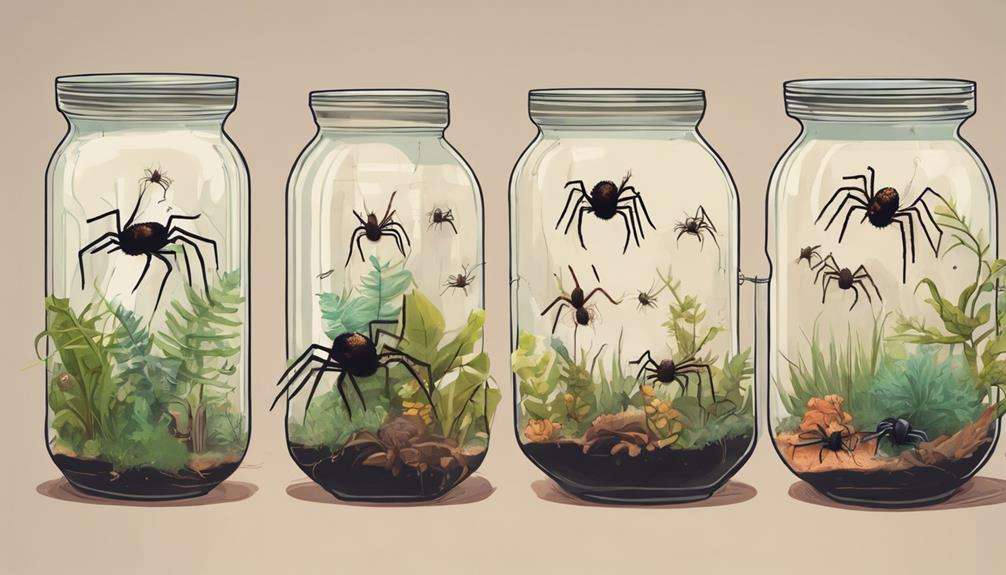If you're looking to dip your toes into the world of pet spiders, choosing the right species can feel as delicate as walking on a tightrope. Imagine carefully selecting the perfect arachnid companion, one that suits your handling style and temperament.
But before you take the plunge, it's important to understand the nuances of each species and their unique characteristics to guarantee a harmonious pet-owner relationship.
So, which top pet spider species are best suited for handling? Let's unravel this web of possibilities together.
Key Takeaways
- Curlyhair and Mexican Red-Knee tarantulas are ideal for calm handling experiences.
- Orb Weaver spiders are beginner-friendly with unique nocturnal hunting behaviors.
- Safety handling tips include cautious approaches and providing spacious, secure environments.
- Black Widow spiders are fascinating to observe but unsuitable for handling due to venom, while Huntsman spiders are safe and docile for interaction.
Tarantulas for Handling
When handling tarantulas, choosing species like the Curlyhair and Mexican Red-Knee is recommended due to their calm temperament and ease of care. These tarantulas are ideal for beginners thus they're less likely to bite and can be managed with minimal stress. Their docile nature makes them suitable for handling, providing a unique bonding experience and insight into their behavior. In addition to the Curlyhair and Mexican Red-Knee, tarantulas such as the Greenbottle Blue and Pinktoe are also good options for those looking to interact with these fascinating arachnids.
The Curlyhair tarantula, known for its gentle demeanor, is a popular choice among enthusiasts. Its relaxed nature and relatively slow movements make it easier to handle, especially for beginners seeking a positive interaction. Similarly, the Mexican Red-Knee tarantula is favored for its calm disposition and striking appearance, adding to the overall experience of caring for and handling these remarkable species. Overall, selecting tarantulas with a calm temperament and easy care requirements can enhance the enjoyment and educational value of keeping these arachnids.
Orb Weaver Spider
Orb Weaver spiders are fascinating creatures known for their nocturnal hunting habits. These spiders are ideal for beginners due to their availability and ease of care.
Providing a spacious tank for Orb Weavers to spin their intricate webs is essential for their well-being.
Safety Handling Tips
For safe handling of the Orb Weaver spider, it's essential to approach them with caution and awareness of their natural behaviors. Orb Weavers, being active during the evening to catch nocturnal insects, make fascinating pets due to their unique characteristics.
Found in gardens and fields, these spiders require a large habitat tank, approximately 45-gallons, to thrive. Ensuring ample space for web-building is important for mimicking their natural environment in captivity, contributing to the well-being of Orb Weaver spiders.
When interacting with Orb Weavers, it's important to observe them from a safe distance to avoid startling or agitating them. By creating a suitable environment that replicates their natural habitat, you can provide a secure and stimulating space for these alluring creatures.
Feeding and Care
To properly care for the Orb Weaver spider, make sure their dietary needs are met with appropriate feeding practices. Orb Weaver spiders, known for their web-spinning behavior, require a spacious 45-gallon tank to support their survival instincts.
These spiders, commonly found in fields and forests, are nocturnal hunters, making it essential to provide the right environment for their activity. While Orb Weaver spiders may be rare in pet stores, they're ideal for beginners due to their ease of care. Ensuring they've ample space to spin their webs is essential for their well-being and natural behavior.
Black Widow Spider
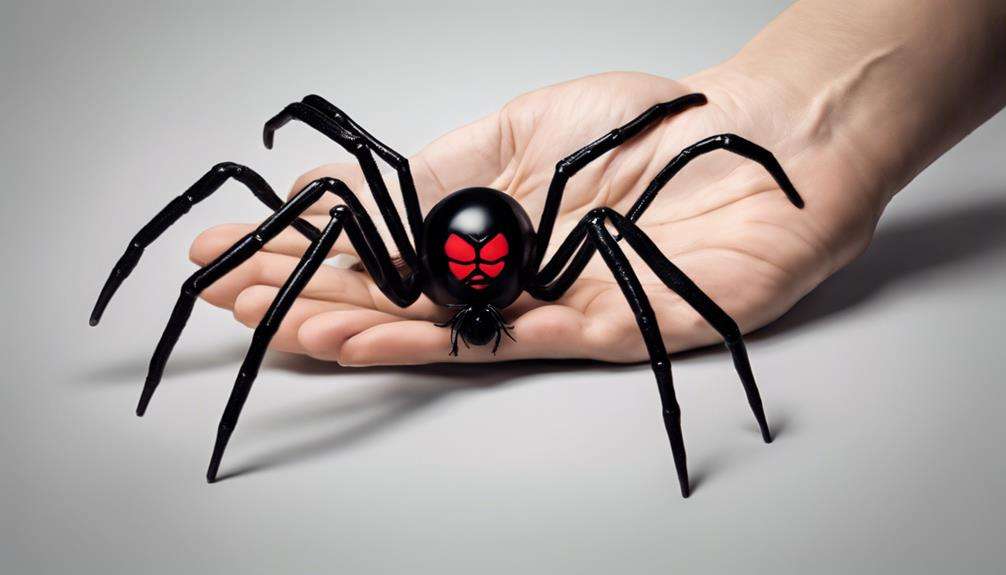
The Black Widow spider, known for its distinctive black body and red hourglass markings, is a venomous species that requires careful consideration when it comes to handling. Black Widows aren't suitable for handling due to the potential danger associated with their venomous bite.
Despite their venomous nature, they're relatively easy to care for, making them low maintenance pets for enthusiasts. These spiders can go weeks without eating and require a 5-gallon tank to thrive in captivity. Widely available in the pet trade, Black Widows are typically inexpensive to purchase, but their care should be approached with caution due to their venomous capabilities.
It's essential to prioritize safety when dealing with Black Widow spiders, appreciating them from a distance rather than attempting to handle them. With proper care and respect for their capabilities, Black Widows can still be fascinating creatures to observe in a controlled environment.
Huntsman Spider
The Huntsman spider, a large arachnid with distinctive long legs and typically grey or brown coloration, stands out as a non-venomous species that's safe for handling. These spiders are carnivorous, preying on insects and other small creatures, making them fascinating pets for those interested in arachnids.
Huntsman spiders are nocturnal hunters, preferring to search for food during the night and seeking shelter in hidden spots during the day. Their ability to adapt to different environments and their preference for narrow spaces make them versatile pets that can thrive in various enclosures.
Despite their intimidating appearance, Huntsman spiders have a docile nature, making them relatively easy to handle compared to other spider species. Their calm demeanor adds to their allure as pets suitable for those looking to interact with and observe these intriguing creatures up close.
Costa Rican Zebra Tarantula
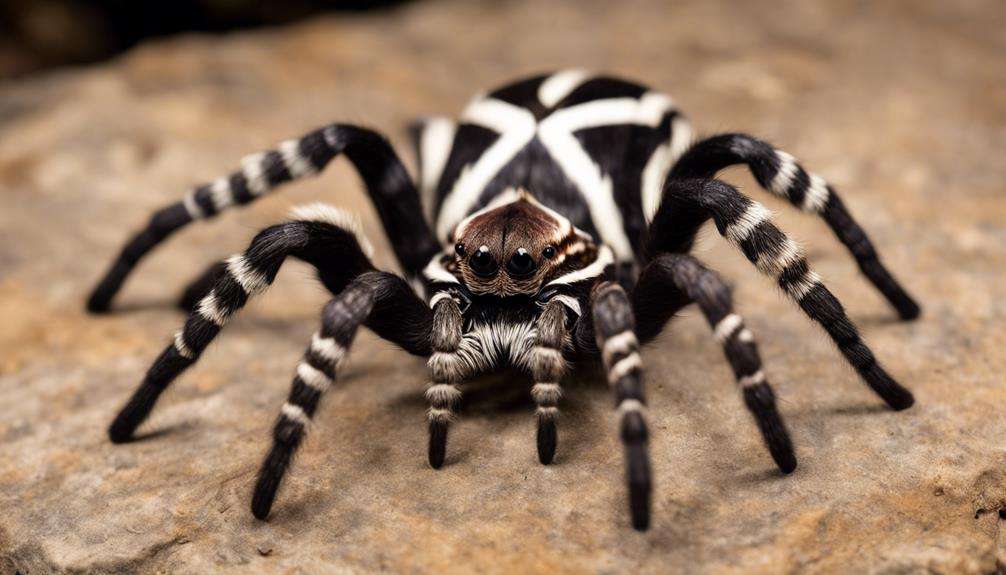
Costa Rican Zebra Tarantula, known for its hardy nature and unique white knee stripes, is a low-maintenance pet ideal for beginners. This species is robust, rarely falling ill, and hence making it an excellent choice for those new to tarantula ownership. The striking white knee stripes on its legs give it a distinct appearance, adding to its allure as a pet spider. Despite its enchanting look, the Costa Rican Zebra Tarantula is typically shy, preferring not to engage in handling or human interaction.
To guarantee the well-being of a Costa Rican Zebra Tarantula in captivity, specific environmental conditions must be met. Maintaining the correct temperature and humidity levels within their habitat is essential for their health and comfort. It's recommended to house these tarantulas in a 10-gallon tank to provide ample space for movement and thriving. By creating a suitable environment that mimics their natural habitat, you can enjoy observing the fascinating behavior of the Costa Rican Zebra Tarantula while respecting its preference for solitude.
Jumping Spider
Jumping spiders, characterized by their quirky behavior and harmless nature, are fascinating arachnids that captivate spider enthusiasts worldwide. These tiny arachnids, known for their active hunting style, are a popular choice for those looking for a unique pet. Despite their small size, jumping spiders exhibit a colorful appearance that adds to their charm.
One of the most intriguing aspects of jumping spiders is their quirky behavior, which includes interactive activities and courtship dances. These spiders are non-blood feeding and pose no threat to humans due to their harmless nature. In fact, they enjoy human interaction, making them engaging pets for enthusiasts who appreciate their curious demeanor.
With over 6,000 species globally, jumping spiders stand out for their distinctive characteristics and engaging personalities. Their ability to engage in courtship dances and their active hunting style make them a favorite among arachnid lovers seeking an interactive and visually appealing companion.
Frequently Asked Questions
What Is the Most Friendliest Spider?
When selecting a spider for companionship, consider the Brazilian Black Tarantula for its friendly demeanor. Handle with care, observe body language cues, and provide enrichment for best socialization. Building trust through gentle interactions enhances the bond with your spider.
Do Pet Spiders Like to Be Held?
Pet spiders typically do not appreciate being held as it can cause stress and discomfort. It is important to observe their preferences, proceed with caution, and prioritize their well-being. Respecting their boundaries is vital.
Can You Handle Pet Spiders?
Yes, you can handle pet spiders with care and knowledge of spider handling techniques. Safety precautions like wearing protective gear are essential. Observe your spider's reactions, build trust, and handle gently. Different species may require varying approaches.
What Is the Best Tarantula for Holding?
When choosing a tarantula for holding, consider the Brazilian Black Tarantula due to its friendly temperament, ease of handling, and suitability for beginners. Their docile nature and manageable care make them ideal for handling experiences.
Conclusion
Thus, the world of pet spiders offers a fascinating array of species for handling, each with its own unique characteristics and suitability for interaction.
From the elegant Orb Weaver to the venomous Black Widow and the active Huntsman Spider, there's a spider species to cater to every enthusiast's preferences.
Stay tuned for more insights on these captivating arachnids and uncover the wonders of spider keeping like never before.
